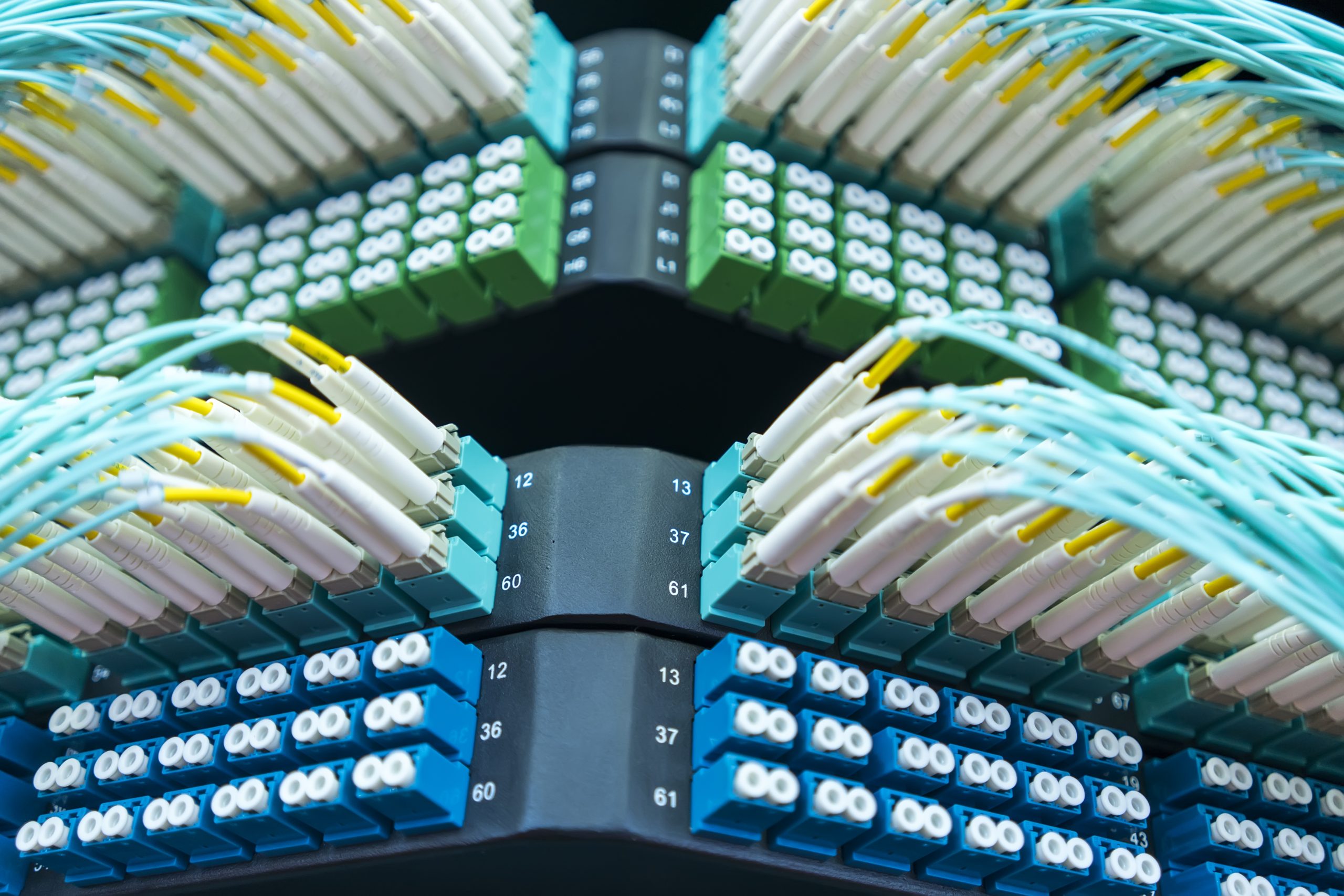## Singlemode vs. Multimode Fibre Optic Cabling for Businesses: Making the Right Choice
With the ever-growing demands for speed, bandwidth, and security, businesses are increasingly reliant on robust and reliable network infrastructure. Fibre optic cabling has emerged as the clear frontrunner, offering significant advantages over traditional copper cables. However, within the realm of fibre optics, choosing between **singlemode** and **multimode** cabling can be a critical decision.
**Understanding the Core Difference:**
The key distinction lies in the **core diameter** of the fibre optic cable. Singlemode fibres have a smaller core (8-10 micrometres), allowing only one mode of light propagation. Conversely, multimode fibres have a larger core (50 or 62.5 micrometres), supporting multiple modes. This seemingly minor difference significantly impacts various aspects of performance:
**Distance:**
* **Singlemode:** excels in long-distance applications (km range) due to minimal signal dispersion (spreading).
* **Multimode:** suited for shorter distances (up to 500m) due to higher dispersion, which degrades signal strength over longer runs.
**Bandwidth:**
* **Singlemode:** boasts significantly higher bandwidth capacity (potentially terabits per second) due to its single-mode operation.
* **Multimode:** offers sufficient bandwidth for most business applications (up to 10 Gbps), but performance degrades with increasing distance and higher speeds.
**Cost:**
* **Singlemode:** generally more expensive due to its complex manufacturing process and specialized equipment requirements.
* **Multimode:** more cost-effective due to its simpler design and wider range of compatible equipment.
**Applications:**
* **Singlemode:** ideal for long-haul backbone connections, data centres, high-performance computing, and metro networks.
* **Multimode:** well-suited for enterprise LANs, building backbones, security systems, and shorter data centre interconnects.
**Making an Informed Choice:**
Selecting the right cable type depends on your specific needs. Consider the following factors:
* **Required transmission distance:** For distances exceeding 500m, singlemode is the clear choice.
* **Bandwidth requirements:** If your applications demand high bandwidths (10 Gbps or higher), consider singlemode.
* **Budget:** If cost is a major concern, multimode might be suitable for shorter distances and moderate bandwidth needs.
* **Future scalability:** If you anticipate future growth requiring higher bandwidth or longer distances, singlemode provides greater flexibility.
**Additional Considerations:**
* **Equipment compatibility:** Ensure your transceivers and other network equipment are compatible with the chosen fibre type.
* **Installation:** Singlemode requires more specialized skills and tools for splicing and termination compared to multimode.
* **Security:** Both options offer excellent security due to their immunity to electromagnetic interference.
**Conclusion:**
By understanding the fundamental differences between singlemode and multimode fibre optic cabling, businesses can make informed decisions based on their specific needs and budget. Remember, there’s no “one-size-fits-all” solution. Carefully evaluate your network requirements and consult with IT professionals to ensure you choose the optimal cabling solution for your business.
**Tags:** fibre optic cabling, singlemode, multimode, distance, bandwidth, cost, applications, business network, scalability, installation, security.



Leave A Comment